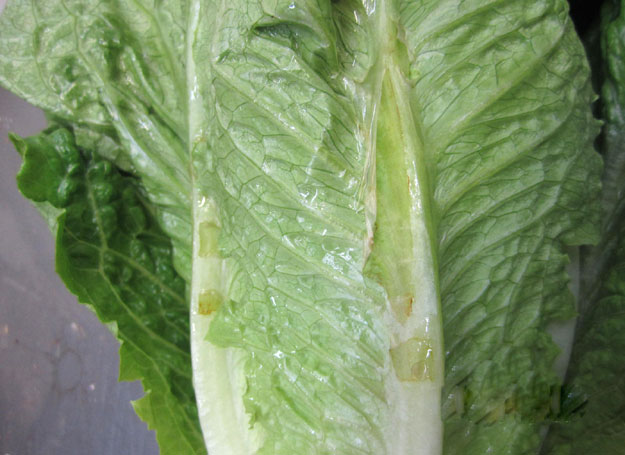With the recent cold weather you may have noticed some peeling and feathering affecting the outer leaves of romaine. This defect is the by-product of romaine being affected by cold (below freezing temperatures) in the fields, while growing. The water in the cell walls of the outer epidermis of the leaves freezes, and when ice crystals form, they puncture the cell walls, killing off the cells. This leaves a peeling appearance. When the outer epidermis peels, the exposed area becomes exposed to oxidation, which results in the yellow to brown discoloration frequently associated with peeling and feathering.

The USDA has a scoring guideline to follow; it states: Score as damage when more than 2 leaves are materially affected and as serious damage when more than 4 leaves are materially affected by peeling and feathering. You are not allowed to brush the area affected to determine the damage. The question that arises is what is meant by “materially affected?”
If you can readily see the peeling and feathering and you find it affecting at least 3 leaves, then score the plant as damage. If the peeling and feathering is affecting 5 or more leaves then score the plant as serious damage. But if yellow to brown discoloration accompanies the peeling and feathering, then you would still need it to affect more than 2 leaves before scoring as damage, but you would need less of an area affected on each leaf, to be considered as materially affected.
Looking at the above image, the area affected is considered materially affected, so you would need to see this on at least 3 leaves to be scored as damage, or on at least 5 leaves to be scored as serious damage.

One Comment on “Romaine- Peeling and Feathering”
[…] To see a previous post regarding field freezing affecting romaine, please click here. […]